Some time ago I looked at aligning images with a few different tools, and came to the conclusion that PixInsight did a better job. Based on that, I have been wondering for awhile whether calibrating images (bias, dark, flat) works better in MaximDL or in PixInsight. I normally use MaximDL; ACP has a setting which automatically calibrates each image using Maxim right after the image is taken. When my night’s run is complete the calibrated images are ready for me to start processing; very convenient.
Recently I rebuilt some of my dark/bias/flat library masters in Maxim. I took the opportunity to use those same frames to build corresponding masters in PixInsight.
Procedure
After chilling the camera to -5°C, I took
- 40 bias frames
- 25 dark frames at 300 sec (5 minutes).
- 25 Lum flat frames using an LED Panel with controllable intensity using ACP’s AutoFlat routine
These were combined to create masters in both Maxim and PixInsight (BPP). I also created a SuperBias in PixInsight.
I then took a random 5 minute image of M64 (Lum filter) to compare the two calibration methods. The Maxim image was calibrated during the image run in the usual way, producing the original raw uncalibrated image and the Maxim-calibrated image. The raw image was then calibrated in PixInsight using BatchPreprocessing (BPP).
Results
Flat Frames
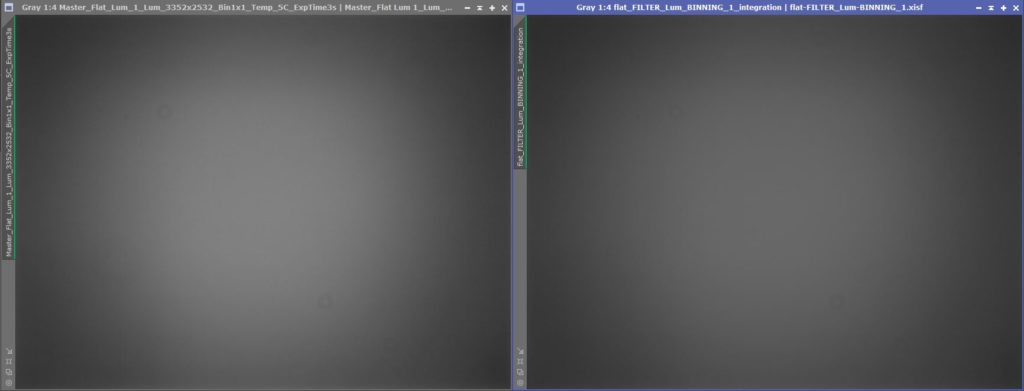
The two flat frame masters are different (a standard STF stretch has been applied to both). The Maxim master is significantly brighter in the center. The PixInsight flat is “flatter”. Both show donuts about the same.
This may not be comparing apples to apples, however. One or the other master flat may already have the bias or dark subtracted. Alternatively, one master may have taken “flat darks” into account by scaling a dark master.
Calibrated Images
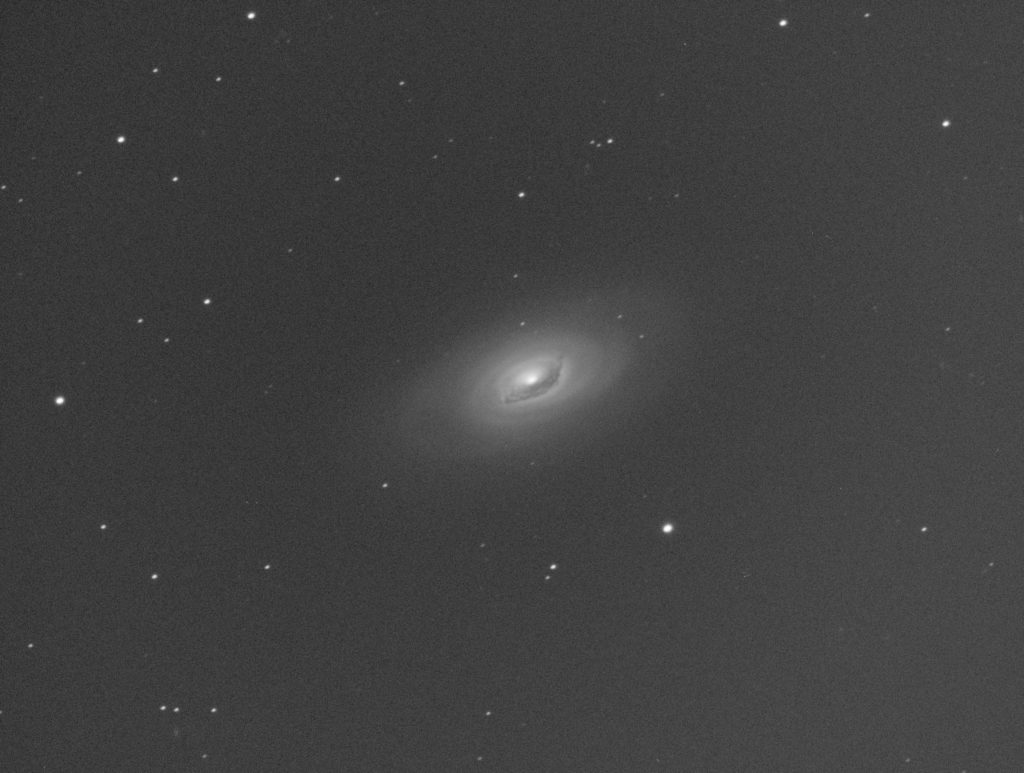
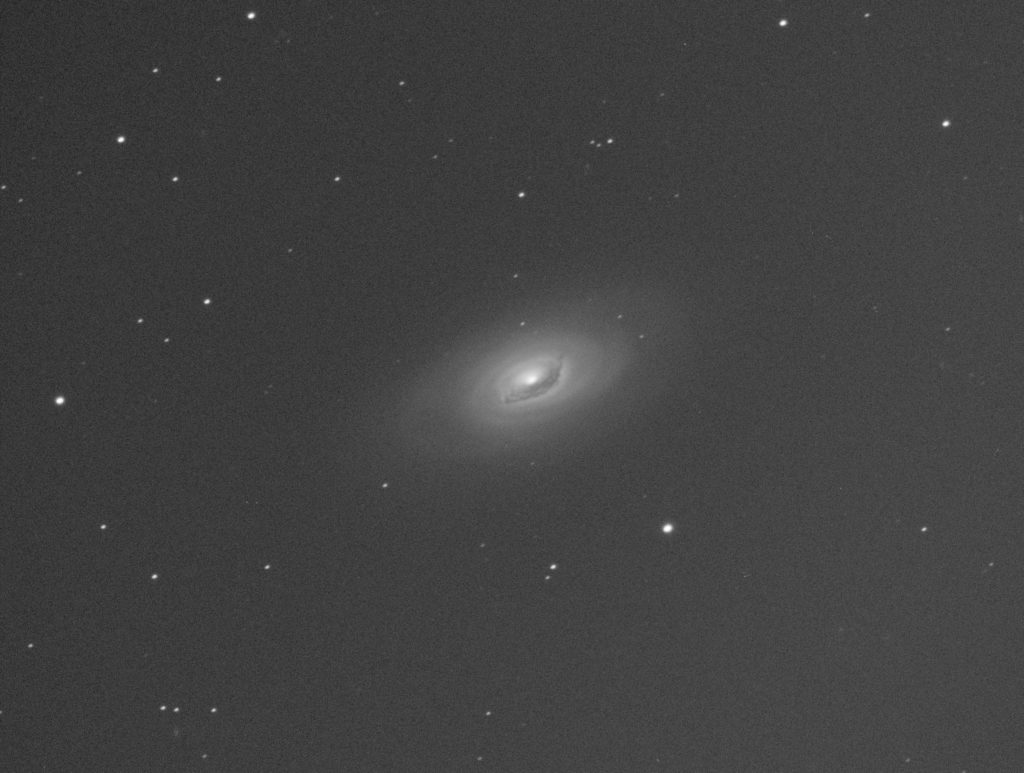
The Maxim image shows a slight darkening in the center. The PI image also has some darkening, but not as much to my eye.
The statistics on the two images are shown:
| Maxim Image |
PixInsight Image |
| count (%) 99.99998 count (px) 8487262 mean 1.859743e-02 median 1.842878e-02 avgDev 1.654844e-03 MAD 1.482117e-03 Sn 1.493205e-03 Qn 1.503084e-03 minimum 7.358726e-03 maximum 9.997482e-01 |
count (%) 99.99976 |
|
noise standard deviation… * Channel #0 |
noise standard deviation… * Channel #0 |
The only obvious difference is that the PI image has a mean twice as large as the Maxim version; it is shifted to a higher value. The noise looks the same. Neither shows odd pixels or anything.
Crops of the two images are shown below. I do not see any significant differences.
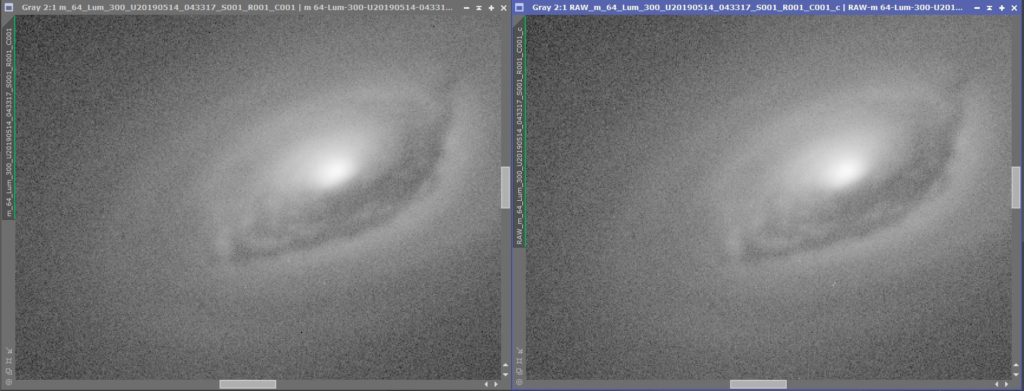
I also looked at the image offsets, where I ran the PixelMath expression 0.2 + ($T – med(imagename)) to generate a new image.
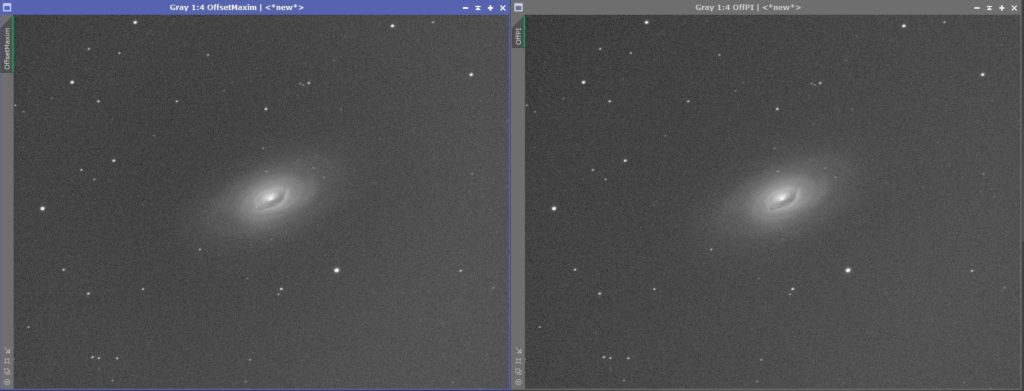
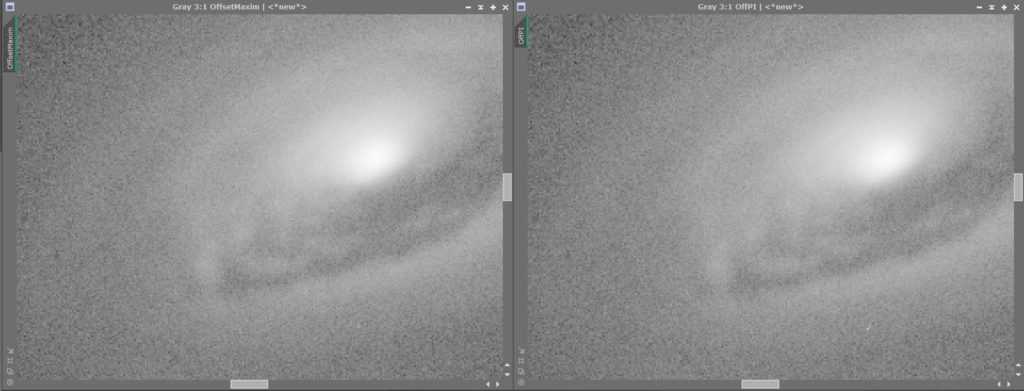
The PixInsight image looks darker, but the histograms look the same. The crops look the same to me.
Conclusions
There don’t seem to be significant differences in the two images. The PI histogram is shifted, but there seem to be no other significant differences.
Having Maxim do the calibrations from ACP is easier, so I will stay with that technique.

Thanks for this. I have been using maxim for years, but have been trying PixInsight because I could not easily get reasonable color balances with Maxim Dl.
But I am not finding it to be a piece of cake in PixInsight easier.
Maybe I will do calibrations in Maxim and then finish processing in PixInsight?